In the Philippines, as in many countries, to be seen as trans also means to be susceptible to violence. Visibility is tricky this way: we draw close attention to all forces that define and limit and eventually transcend it, only to risk being a target of hateful, prying eyes.
In the classroom, being trans means adhering to dated policies designed to teach us warped notions of obedience and what is “proper.” In the workplace, it entails lower compensation, heightened abuse, and being a minority. In the media, it means enduring tired tropes and images that map trans lives only in its terminus. In the streets, it leads to hate crimes and abject cruelty.
For transgender people, this writer included, such lived realities roll on a Möbius strip, repeatable by design, precisely because it denies one crucial aspect of our existence: personhood. The heteronormative world can only ever imagine us from the realm of myth, for it’s far more difficult to wrestle with the fact that we also lead many inner lives, that we can be just as “normal” as they are. To those with rigid minds, we are monsters, full stop, for the alternative brings them discomfort.

It’s not far-fetched to say that it’s part of the reason why, over two decades since its first iteration, the SOGIE Equality Bill, a measure to safeguard trans and queer lives against rampant discrimination, remains to encounter roadblocks, largely from right-wing evangelists and conservatives, whose reasons for objection have long been rotating and repeating in staccato.
This cover story is conceived through this frame of mind. As transgender icon Laverne Cox once put it, “When people have points of reference that are humanizing, that demystifies difference.” Here, we feature 10 Filipinos of trans experience and of different backgrounds to argue that transhood is real, complex, meaningful, and part of an accumulation — something that needs to be shared and by all means protected.
Transhood is a spectrum
The transgender revolution, even before it reached the broader public in the 1990s, had long been storied. But the problem is that trans lives are only ever seen through accounts of medical transitioning, deaths, and disintegration of relationships. While these are realities we have to confront, they aren’t all there is to us.

Lakan Umali, a writer and instructor at UP Diliman, articulates a similar sentiment. “I do think there’s a danger in just presenting stories of doom-and-gloom, because it makes it seem like being trans is a death sentence,” she tells me. “In addition to trans joy, we also have to see trans messiness. Trans awkwardness. Trans mediocrity. Trans anger.”
While she has yet to discover a language for it then, Umali first realized that she’s trans at a young age. But it was only in her mid-twenties, well into the pandemic in particular, that she was able to articulate her transness. “I remember looking at men’s clothes and having a visceral reaction that no, I didn’t want to dress like that. I didn’t want to present myself in that way anymore, because it just wasn’t who I was inside.”
Four years into teaching, Umali says she holds it dearly because it doesn’t alienate her from the fruits of her labor. “I really love seeing students grow and cultivate their critical and creative faculties.” Teaching also enriches her transhood, and vice versa. That’s why she asserts that “it’s important for trans people to be educators so that more people, especially young people, can see that trans people exist and function as active members of communities, particularly educational communities.”
She adds, “I think trans educators bring a particular queer sensibility and presence that allows other young people, whether trans or not, to better accept their queerhood and realize that queerness is not something to fear or be ashamed of.”

Trans Pinay pop star Stef Aranas also knows better than to reduce transhood into facile generalizations. “Instead of attempting to condense our complex realities in three minutes, I choose to highlight specific aspects of my trans experience in my music,” she says.
For instance, in QC Gurlz, suffused with personality and lyricism that often switches tongues, Aranas surfaces the beauty of queer friendship. “Kahit tumanda, keri lang / Magkakasama, ceci ko yan / Walang halo ng inggitan / Keri dumayo kahit saan,” the song goes.
Meanwhile, in CVNTY, her latest and first hip-hop single under record label Offshore Music, she strives to create “an anthem for all femmes to feel their oats, as they should.” “It is a celebration of the self. It is a reminder that no matter what, you are the baddest bitch in the room. Don’t forget it.”
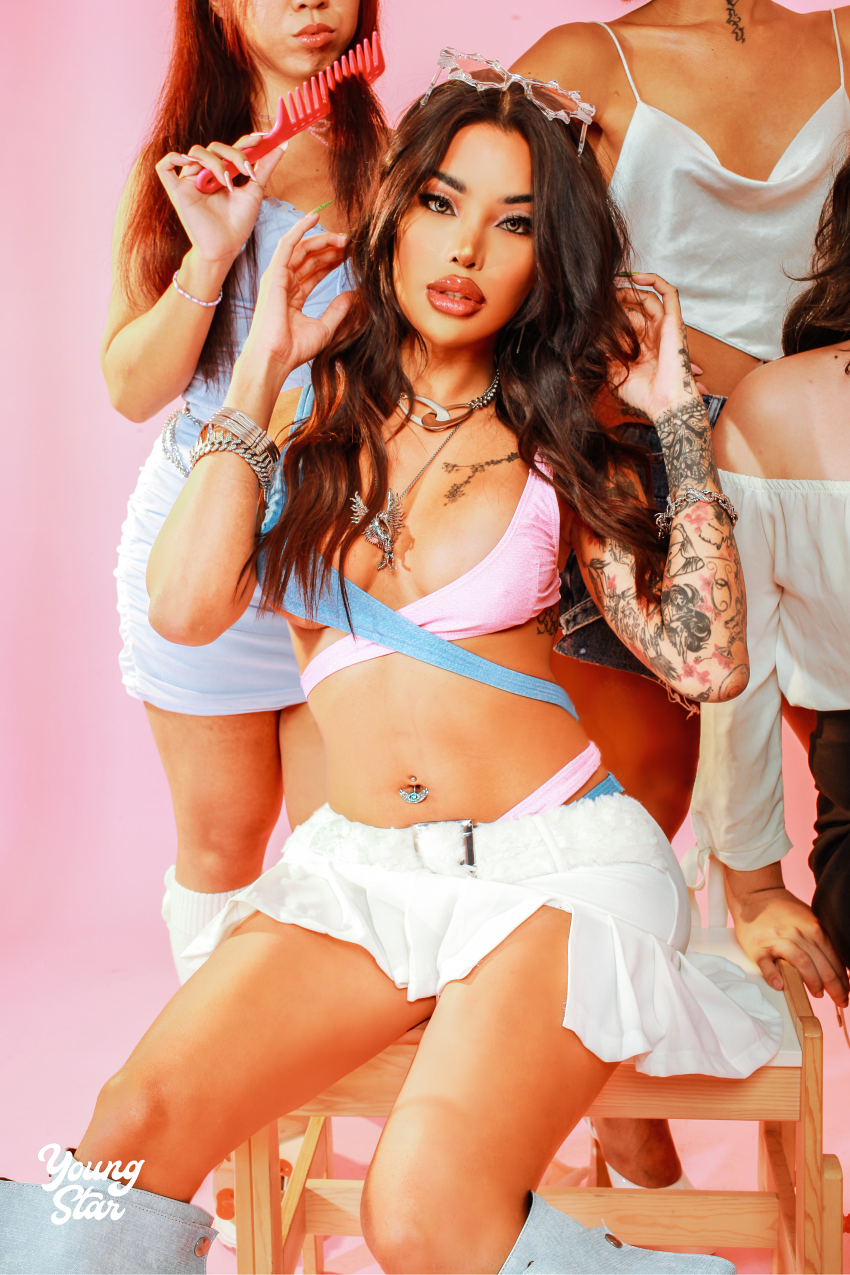
This notion of celebrating the self through transhood parallels the mantra of drag artist M1ss Jade So, of Drag Race Philippines season 2, especially in the way she manifests what she coins as “goddessafication” in her craft. “Goddessafication is having to reach your higher self, and by this you’ll get to finesse your ultimate capabilities to its full potential,” she explains.
So says further, “Whenever I’m embodying Goddessa I look and behave as one; this is my higher power. But whenever I’m the Bratzy, I just am being myself authentically. For me, it’s okay to have different faces in life, as long as you’re doing it for yourself and not to please people.”
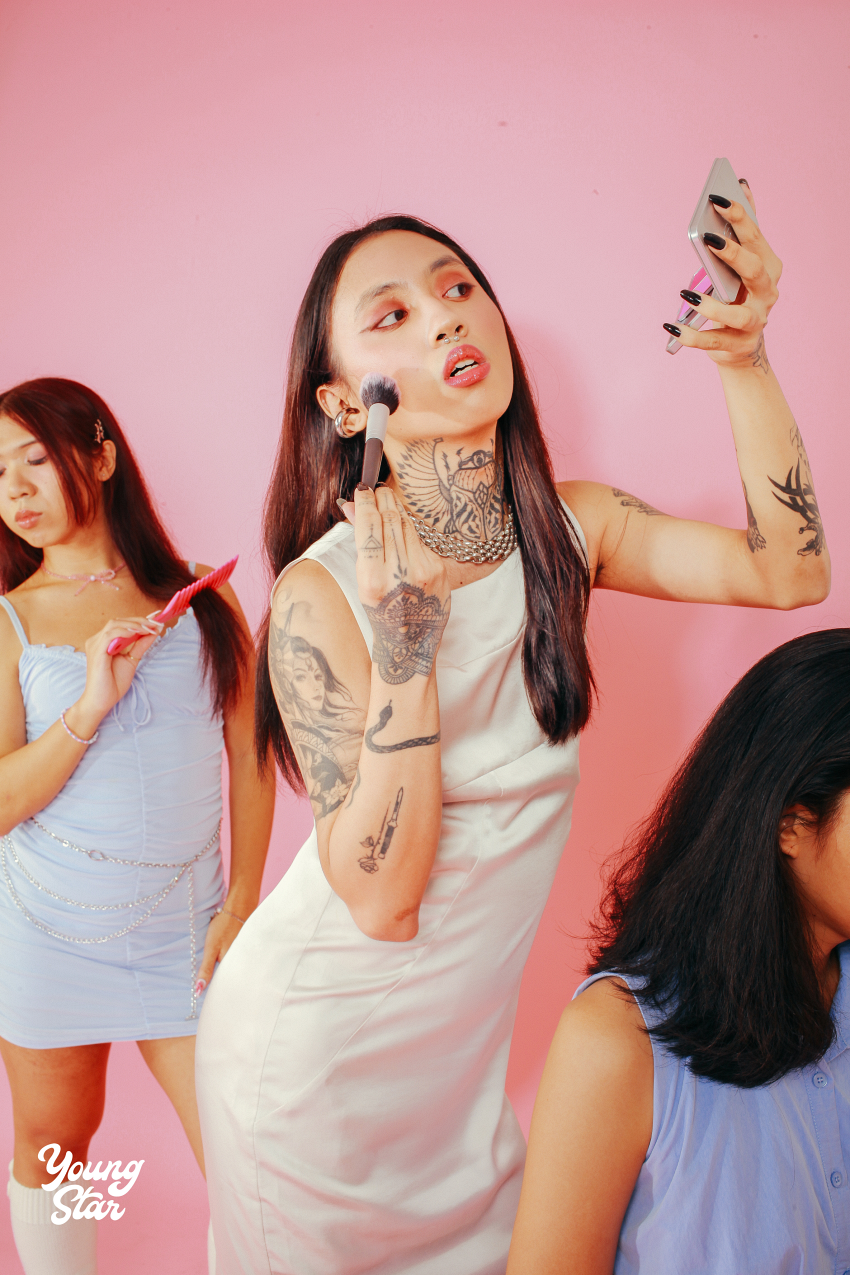
It’s a similar case, particularly in terms of being authentic, for alternative rapper and DJ Pette Shabu, whose work is marked by its irreverence and knife-sharp commentary, perhaps best exhibited in her tracks mamatay ka na, nakakahiya ka and BINGO! “(It) is a mixture of staying true to life and reacting to it,” she says of her artistic process.
She explains, “I get pissed and frustrated with the world, and I myself have already spiraled into the depths of being victimized by my own thoughts. But I am a curious person in a sense (that I think) about what my life would be beyond my fears and self-doubt. What if I fought for my life and really argued with how things are not right?”
“I want to rap like myself. Challenging myself and demanding the spot is natural for me, and that’s how I react to life: ambitiously,” adds the musician. And while she admits that “perception is real” in terms of being seen as trans first more than anything else, which might lead to token and selective opportunities, she doesn’t feel limited by centering herself as a trans rapper. “I take pride in that in the sense that it’s more important to declare our existence; otherwise, we will get erased.”
Umali, as a writer, holds a parallel disposition. “I personally don’t mind my transness being highlighted because I feel my transness and my craft are intertwined. My transness and queerness inform how I process and understand the world, that the world is full of strangeness and contradiction, that things always shift and bemuse and delight. And I think this perspective establishes the foundations of why and how I write,” she states.
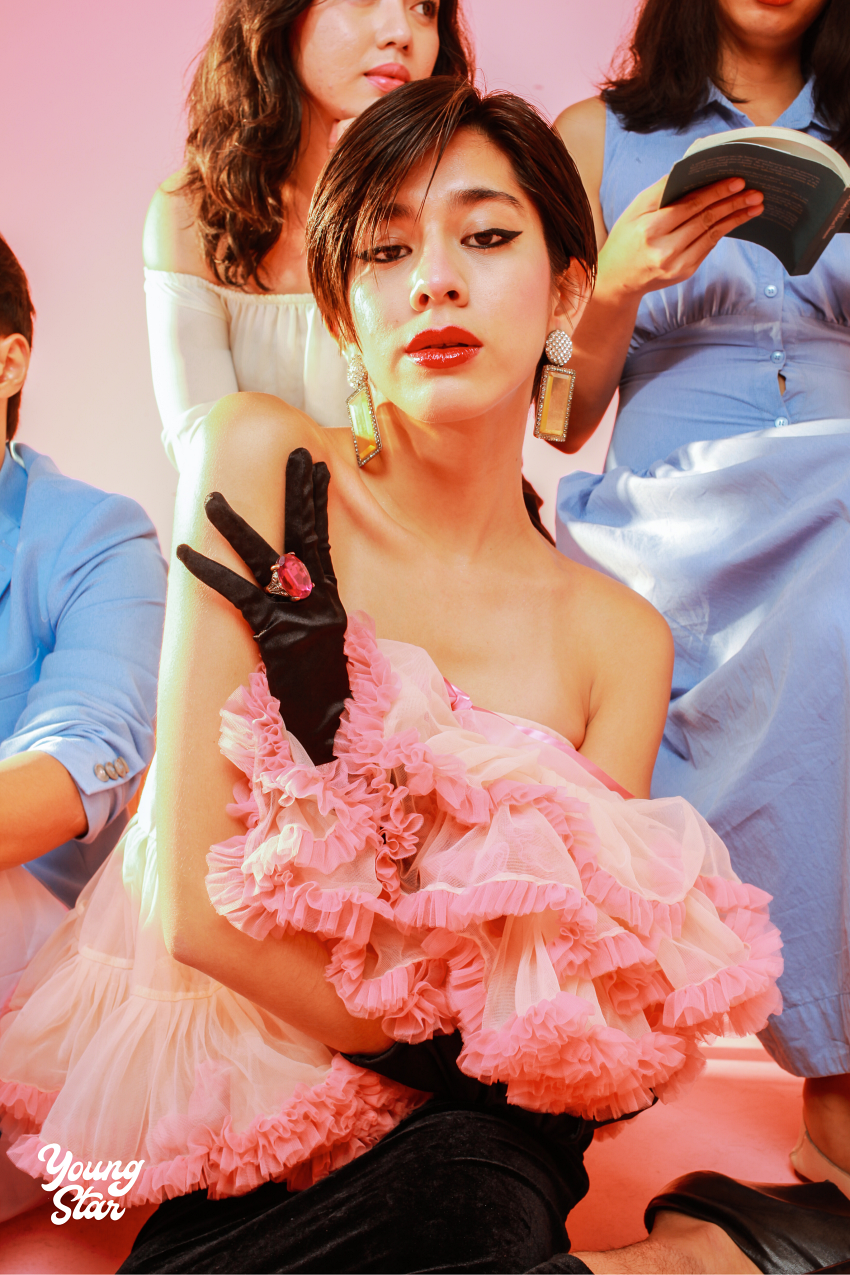
This scale of experiences, in the plethora of ways it breaks the binary code and renders visible the corners rendered invisible by sweeping heteronormative structures, makes a compelling argument that transhood is hard to, and will never, fit into a singular mold and mode. Simply put, there’s no canon for being trans. Filmmaker and drag performer Celeste Kuh Lapida puts it best: “I think that’s what other people should keep thinking about transgender bodies — we come together! We’re kind to each other, we crack jokes because that’s how we show care, and it’s possible to keep imagining new realities for ourselves.”
The struggle is just as fluid
But after surfacing our existence, with all its multitudes, there follows the struggle — in all its cruel, crippling forms. The danger, it seems, is just as fluid as the lives we lead. It’s unrelenting and present at every turn.
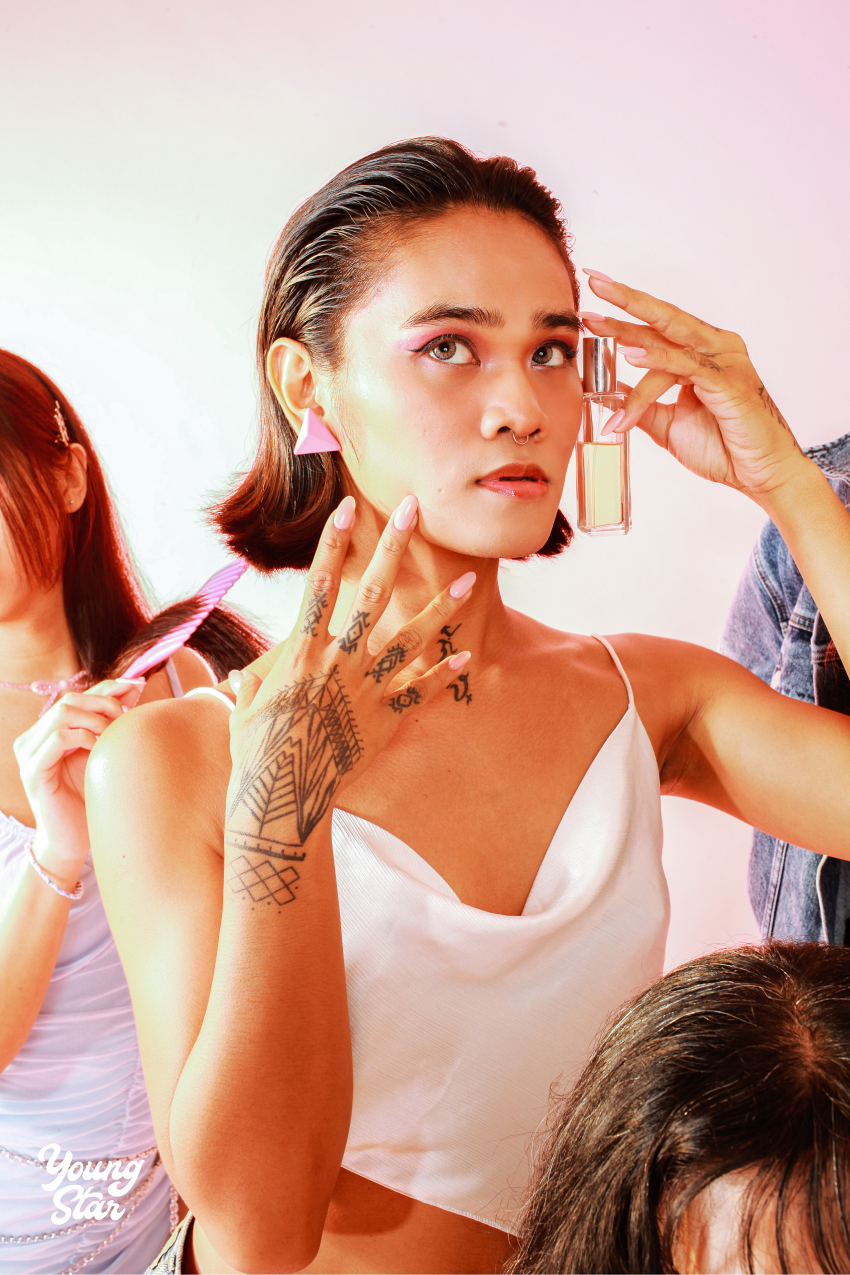
Theater and film actor Serena Magiliw knows this all too well. “Bilang aktor, malaking suliranin na wala gaanong naisusulat na mga tauhang trans. Hindi rin naman madalas na ma-cast ang isang trans actor sa isang cis role. Pahirapan tuloy na gawing sustainable ang ganitong propesyon dahil kakaunti lamang ang nalilikhang trabaho.”
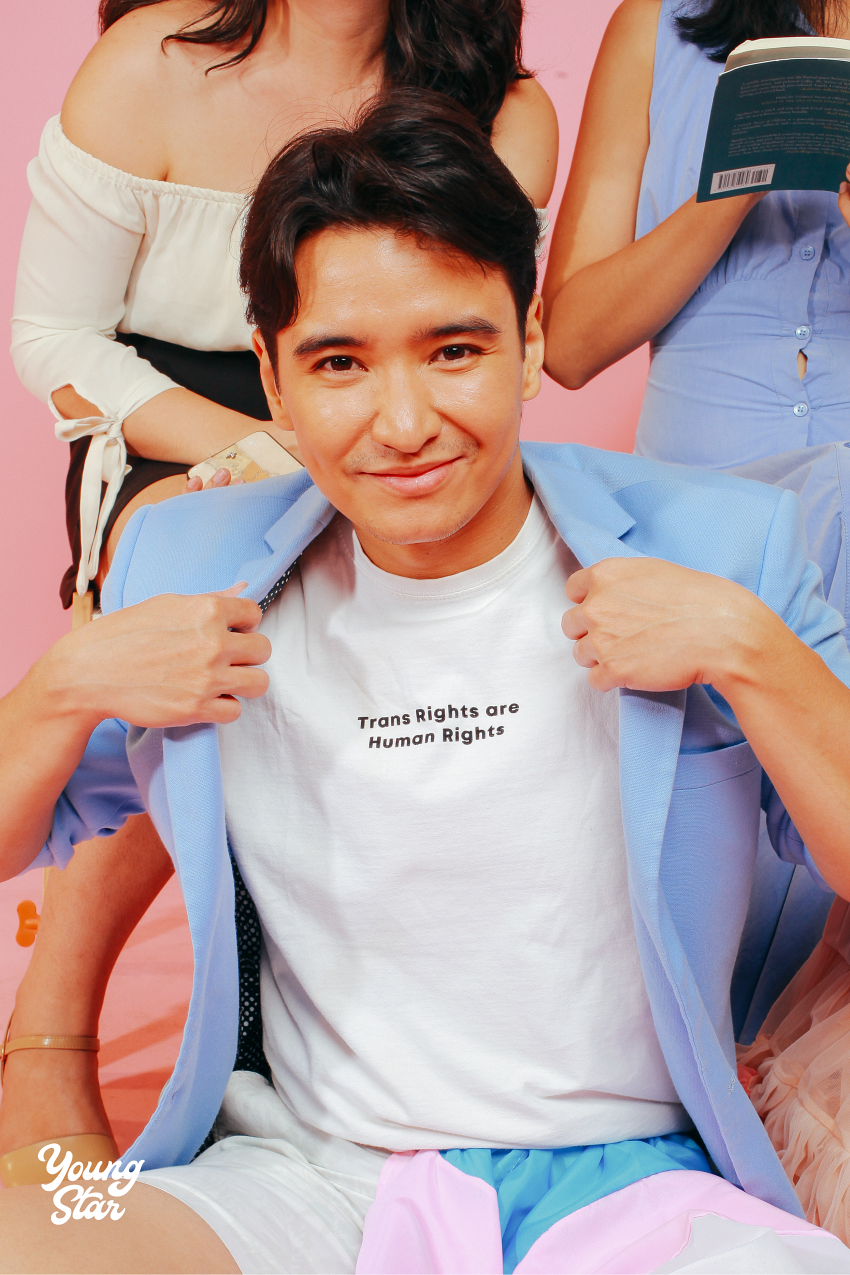
Sky Teotico, of Rae Red’s revenge thriller Babae at Baril, for one, had to shelve his acting career for a time to focus on a more stable source of income — a printing business called Alapaap — with his wife, Gia.
“Napakakonti ng opportunities for trans people in the industry, and may stigma na we can’t play straight roles. And we can’t just play any role kasi mata-tag as trans ‘yung role because we are trans. Napakarami pa din na nakikita ako na no different to masc lesbian. This is the part where I also feel pressured to establish myself. As someone na hindi hard masculine, they see me as gay,” he says.
Magiliw notes further, “Susundan ito ng kung mayroon mang maibigay na proyekto, maraming kailangang bakahin na atrasadong pananaw mula sa mga manunulat, direktor, producer, o kapwa man aktor tulad ng microaggression, stereotyping, misrepresentation, at iba pa.”
It’s within this condition that proper representation intervenes materially in the life of trans talents, precisely because it’s their livelihood, their very means of survival. “Napakahalaga na mismong trans ang gumaganap sa mga naratibong trans sa entablado man o pelikula dahil iyon ang tunay na ibig sabihin ng representasyon,” Magiliw points out.
Napakahalaga na mismong trans ang gumaganap sa mga naratibong trans sa entablado man o pelikula dahil iyon ang tunay na ibig sabihin ng representasyon.
“Kung ako man ang gumaganap, nuanced ang magiging pagtatanghal dahil malapit iyon sa aking danas, na magiging makabuluhan kung ako rin ang manonood dahil malalaman ko kung sang-ayon ba ako sa nakikita ko batay sa kung ano man din ang pinagdaanan ko sa parehong naratibo.”
Teotico adds, “If they see us doing the things they do, one step closer ‘yun to knowledge and acceptance. And for those who can’t come out of the closet, imagine (if you’re) literally in a closet and you heard someone you can relate to, ‘di ba mapapasilip at mapapaisip ka, ‘Pwede na ba akong lumabas?’”
But seeing a trans person onscreen or onstage is one thing; having them working as producers, writers, and directors is another conversation altogether. “Dahil magma-manifest pa rin sa kanilang mga gawa ang kanilang gaze. Kaya mahalaga na mayroon ding trans sa likod o sa proseso ng pagbubuo at pagpapasya upang makapagbigay talaga ng pananaw sa kung paano ang danas natin sa totoong buhay,” says Magiliw.
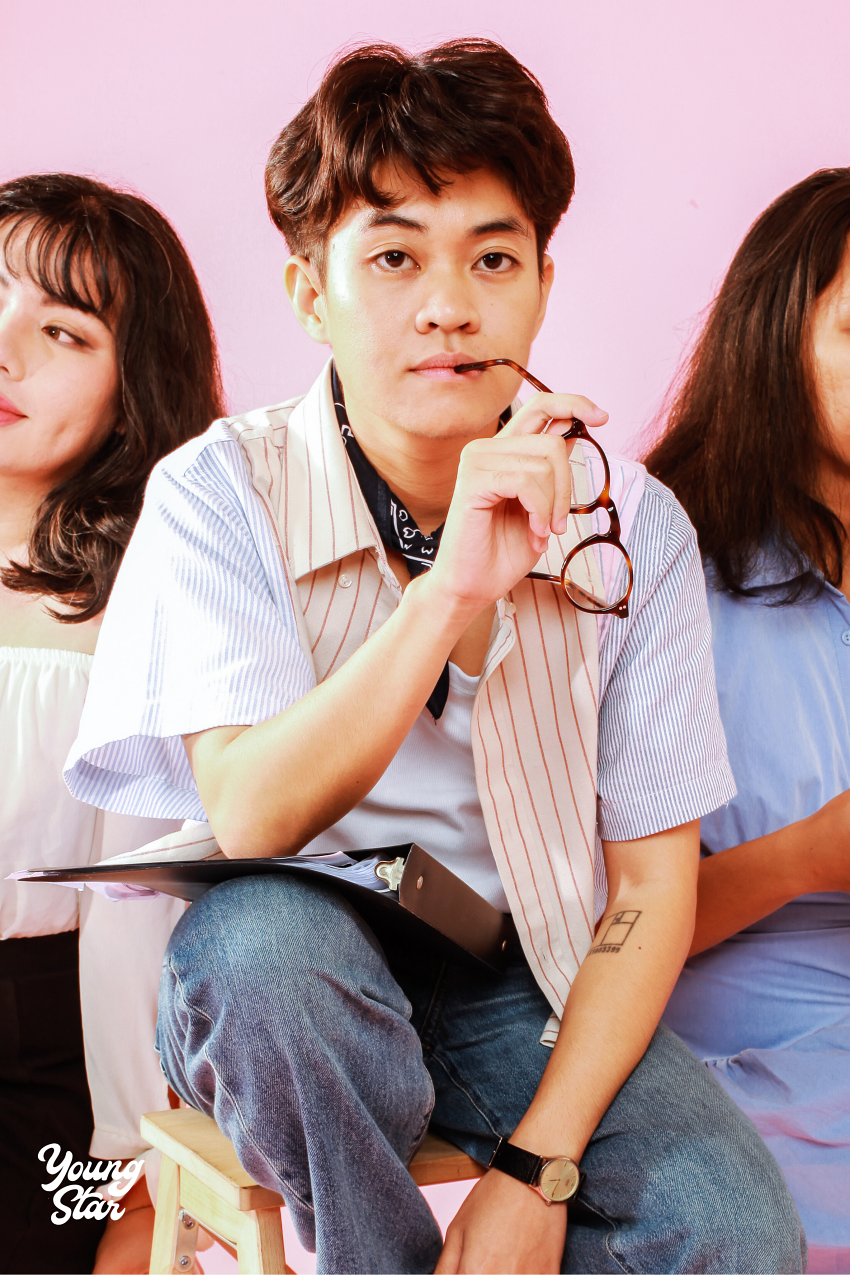
Her fellow theater actor Zoë de Ocampo backs this up, saying that recent attempts at portraying transness are usually hit-or-miss. “I find myself wondering whether or not the pain of being misrepresented is worth it to even be seen at all, and this issue could easily be mended by bringing in trans artists offstage. Trans directors! Trans writers and dramaturgs! Even trans camera operators and composers — the gaze is different! These people are your best shot at telling an intelligent, caring, and interesting trans narrative without tokenizing or sensationalizing it — because why would we ever want to portray our own lived experiences as one-sided (or worse, boring!)?” he puts it.
De Ocampo got into theater in 2017 through Tanghalang Ateneo, beginning as a graphic designer for one of the theater company’s stagings. “Somehow that little job blew up into a theater degree and, eventually, an acting career.”
Since then, he has taken roles in Peter Mayshle’s Dolorosa, directed by Jenny Jamora; M. Manalastas’s Ang Tuyom, directed by Gio Potes; and Guelan Luarca’s Ardór. This June 29, he is set to play “a testosterone-riddled 16-year-old from an all-boys boarding school” in CAST PH’s Patintero Sa Ayala Avenue. Lovely as these opportunities may be, de Ocampo admits that “it’s objectively harder to land roles as an actor when you don’t fit the description,” to the extent of being typecast.
I find myself wondering whether or not the pain of being misrepresented is worth it to even be seen at all.
Akin to this is the realities that trans artists in the local music scene have to barrel through. Shares Pette, “There are really not a lot of us (in the scene), to my knowledge. So to carve a path for myself is the most possible gesture I can do to protect myself and to really be the best at what I do, because apparently everyone can rap, but everyone cannot rap like me in a language that is queer, and queer language is ever evolving.”
She adds, “Queer people get me, even if they are not rappers. So that’s what I meant by carving a path for myself — bringing the queer community with you.”
Meanwhile, Lapida, whose film Somewhere a Destination is now part of the Criterion Channel, cites funding as the biggest hurdle in being a trans filmmaker, as well as “the powers that be who play a role in allowing abusive men to flourish and get away with their sins, just for a couple of awards.”

More hurdles crop up when one begins to draw focus to the state of trans healthcare in the country, to which Aisia Castelo, a licensed psychometrician and researcher, devotes her work. “It’s deeply unregulated and inaccessible, spanning from challenges with black market hormones and inadequate insurance coverage to the prohibitive costs of accessing services. The absence of laws or guidelines for trans-inclusive healthcare further compounds these issues, exacerbating barriers to essential gender-affirming care. This is why we require more studies led by trans researchers, grounded in scientific evidence, to advocate for our issues and drive meaningful change.”
Now working under Amnesty, a nongovernmental organization focusing on broader human rights, trans health included, Castelo also emphasizes the need for more trans people in the medical field, “not only to provide sensitive and culturally competent care but also to ensure proactive use of funding and achieve the change we want to see.”
The trans community has long been suffering from the lack of access to safe and proper healthcare. In fact, based on a November 2022 report, sexual and gender-affirming services are largely concentrated in the country’s urban centers, with 43 care hubs in Metro Manila and 69 in the rest of Luzon, while only 34 in Visayas and 29 in Mindanao.
Such is the precarity that awaits those who seek to transition medically, which then begs the question: how do we locate medical transitioning in the trans experience?
For Castelo, it’s an affirmation of her identity. “The joy of starting hormone therapy, growing out my hair, and finally feeling at peace with who I am — it was all incredibly fulfilling.”
Lapida affirms this. “Once you realize how amazing it is that our bodies are meant and very capable of changing, you will experience so much power. You can go anywhere. Kahit maglagay ka pa ng tenga sa braso mo, gow!”
“I don’t think people should be scared of medically transitioning. I know there are individuals afraid of the commitment — you’ll either love it or just be a part of who you were once,” adds the director.
The joy of starting hormone therapy, growing out my hair, and finally feeling at peace with who I am — it was all incredibly fulfilling.
However, they both recognize that medical transitioning is also a matter of economic privilege. “Trans women spend around P1,500 to P2,000 monthly on medications, aside from lab tests and check-ups. For trans men, hormone therapy costs about P150 to P300 monthly, but quarterly lab tests cost around P3,000,” reads a latest report by Rappler.
“Therefore, that doesn’t give anyone the right to invalidate those who can’t or choose not to undergo medical transition,” says Castelo.
It doesn’t help that within the trans and queer community itself, there’s this idea of performing beauty, of behaving in certain ways to cater to idealistic standards. Umali weighs in on this, saying, “I do think it stems from that sense of inadequacy, but also the need for safety. Trans women are aware that a lot of people view us as less than cis women. Or even worse, they view us as frauds trying to fool people into thinking we’re ‘real’ women. So, we need to be more beautiful and desirable so we become less ostracized and more accepted.”
“On the level of safety,” Umali adds, “passing as a cis woman would mean there’s less chance I would get clocked on the street. It means no one would call me ‘sir.’ It means less blowback from transphobes because they wouldn’t be able to tell I was trans in the first place. Which, on a larger scale, is something that doesn’t just detrimentally affect trans women, but cis women who don’t fulfill the standards for feminine beauty.”
De Ocampo, on the other hand, sees trans and queer beauty juxtaposed with conformity as an oxymoron. “Queerness is in itself the refusal to satisfy the colonial ideals that Western cis people demand of us,” he declares.
“I want nothing more than for us to take the idea of extravagance and extremity that others punish us for, and turn it into joy — lean into our most eclectic natures and feel angry and extreme and joyful. To be queer is to return to yourself! To remake and to perform an alchemy of the self and to say 'f*ck you' to whatever expectations were set on you by upbringing or schooling or religion, and to feel really fucking good about it. And perhaps if your concept of being beautiful is conforming to an ideal; of passing, that itself is still a reversal of expectations.”
Disrupting the cis-tem by linking arms
Such facets of marginality, fraught and debilitating as they are, create a compass that points the trans community to a clear, steadfast objective: resistance. We disrupt the cis-tem by linking arms with other oppressed sectors, because how else can one grapple with the incoherence of erasure?
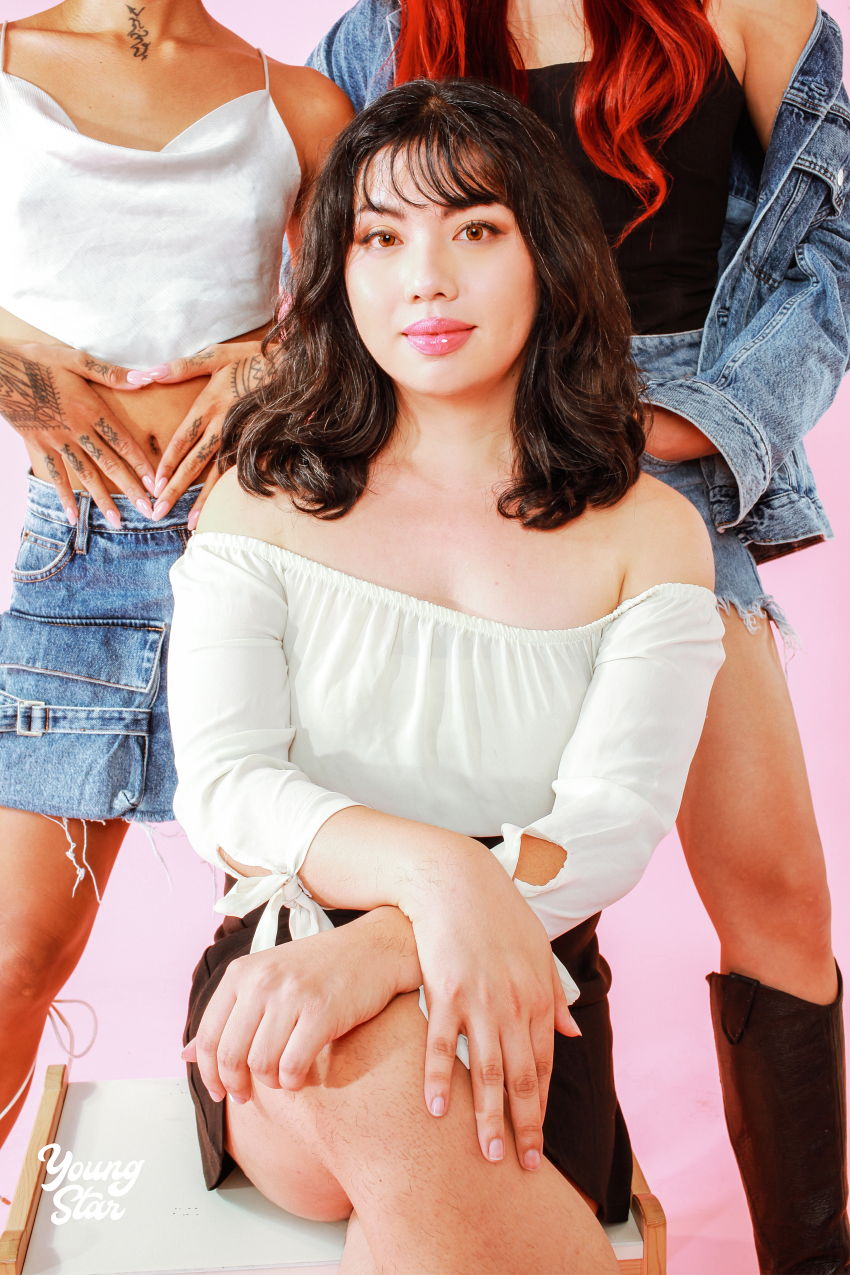
It’s the reason why Reyna Valmores, chairperson of Bahaghari, “a national alliance of Philippine LGBTQIA advocates, organizations, and Pride formations,” asserts that transhood, above anything, must hinge on active organizing. “More than portraying us as people who are suffering, and more than seeing us overcome, the world should see us trans people organizing and mobilizing to actually end our suffering and the suffering of oppressed and exploited peoples entirely,” she says.
The realization came to Valmores when she began to look closer at grassroots realities. “Seeing firsthand the widespread poverty and displacement of transgender and other LGBTQIA persons in urban poor communities in Tondo and Tatalon, briefly becoming a teacher at the Lumad Bakwit Schools and hearing the stories of Lumad children who have marched from their ancestral lands due to rampant displacement and militarization, and meeting with contractual workers who could scarcely make a living as well as peasants facing land-grabbing — these experiences taught me that the world is far more than myself and my own dreams. I realized that there is really no other path except to dedicate myself to organizing, to contributing however much I can to help change things for the better.”
Valmores also underscores that, much like the trans and queer movement, allyship has long been about community and militancy. “If you, a straight person, refuse to recognize the rights of transgender and LGBTQIA persons more broadly, either because you are unaffected or have misled values, I urge you to remember that you have so much more in common with us trans people, as your fellow working-class Filipinos, than you ever will with a dictator’s son who will never even flinch when you feel hunger, or receive dirt-poor wages, or are fired from your contractual job. But we will. Because we trans people suffer from these exact problems too. So instead of sowing division among ordinary and exploited people which we all are a part of, let us unite, listen to each other’s concerns, and build an even broader and stronger coalition that will fight for all sectors in society.”
I urge you to remember that you have so much more in common with us trans people, as your fellow working-class Filipinos, than you ever will with a dictator’s son who will never even flinch when you feel hunger, or receive dirt-poor wages, or are fired from your contractual job. But we will.
Since June 1994 when ProGay steered what is now dubbed “Stonewall Manila,” the first Pride march in the Philippines and across Asia, the trans and queer community has created so many strides and claimed countless victories, most of which won’t be possible without public clamor.
And while local measures like the first ever Gender-Fair Ordinance passed by Quezon City in 2014, which has since been a blueprint for over 30 LGUs, are in place, Valmores emphasizes, “What the LGBTQIA community needs is a comprehensive, nationwide-scope legislation that will protect all Filipinos against discrimination on the basis of sexual orientation, gender identity, gender expression, and sexual characteristics.”
In the years that she’s been lobbying and fighting for the rights of the disenfranchised, queer or otherwise, Valmores continues to be at the receiving end of state aggression, from red-tagging to her brief tenure as a political prisoner and the unrelenting incidents of stalking and intimidation tactics by state forces. “What keeps me going is knowing that exploitative people in power are paper tigers,” she says.
“They can certainly arrest us, vilify us, and make us disappear. But they can never squash the movement we are a part of. Repression can only delay change so much, but can never stop it. So long as the violence and widespread exploitation of LGBTQIA persons and the Filipino people persist, a hundred flowers of newer, more dedicated young activists will blossom when I am gone. We are tireless. We are invincible. And in the end, we will win. That is where my comfort lies.”
The resistance does not, and should not, stop in the victories we’ve had so far until the SOGIE Equality Bill is enacted, until all oppressed sectors are liberated. As Valmores puts it, “I am not here to be the first trans woman anywhere. I’m here to normalize trans women everywhere. That includes the exciting realm of political leadership and social transformation.”
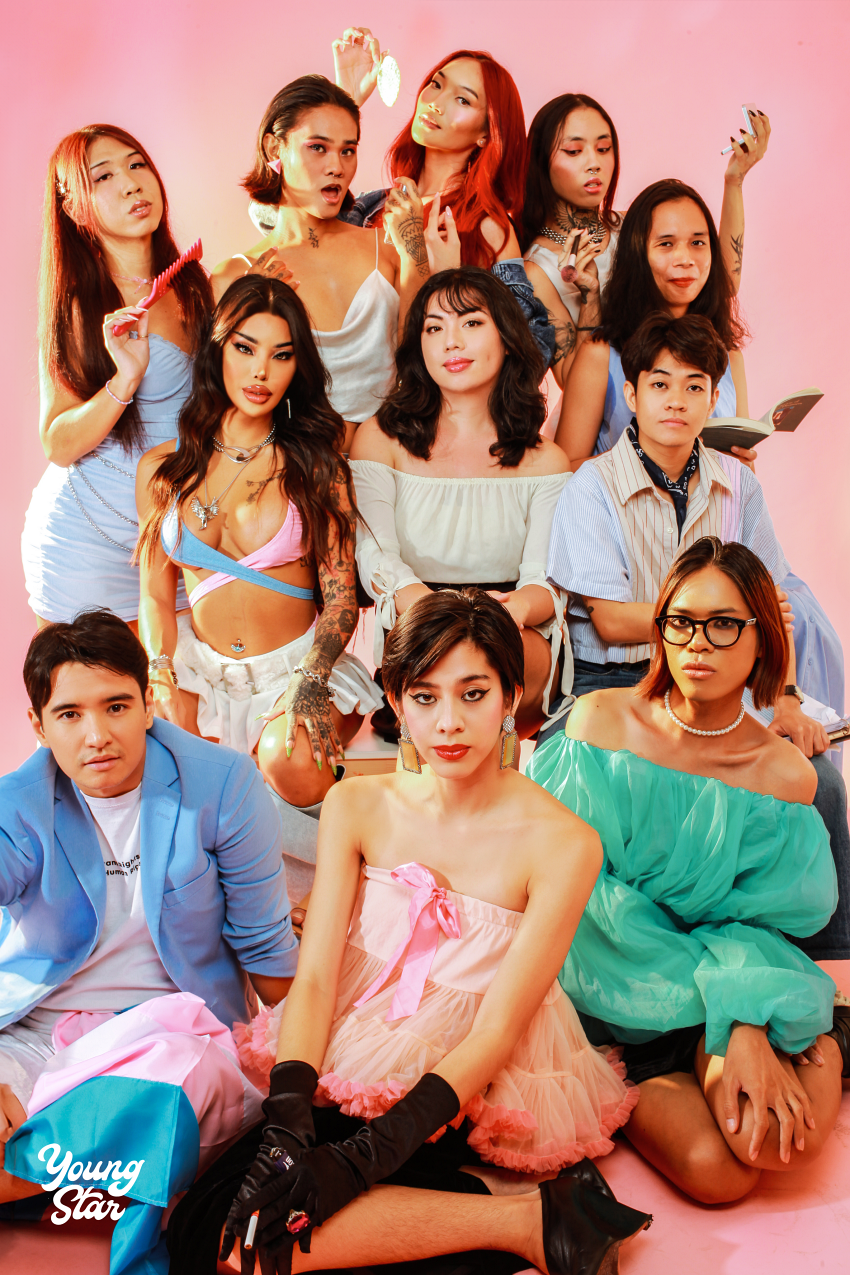
When you spend your entire life enduring unrelenting erasure in a world built with its back against you, you learn to transform marginality into something meaningful. You learn to carve spaces outside of the dictates of the body, outside of imposing structures. You begin to master risk as a language of possibilities. You push back.
And all this time, the trans community has been pushing back against disappearance, against this hostile friction between what is and where to. To refute the term often thrown at us, the only “trick” about being trans is that we can actually be many other beautiful things — teacher, actor, drag artist, musician, filmmaker, activist, to name a few — despite routine attempts to confine us in such limited notions of the self.
There will come a time when the world will progress past the need for affirming one’s gender. Transhood will no longer be radical. But as long as we’re denied the space we’ve fought so hard for, let our response be clear and resounding: We are here and we are not going anywhere. We will never let you deny our multitudes, our many inner lives.
Produced by Lé Baltar and Andrea Panaligan
Photographed by Ennuh Tiu
Assisted by Sean Olalo and Zarah Majam

